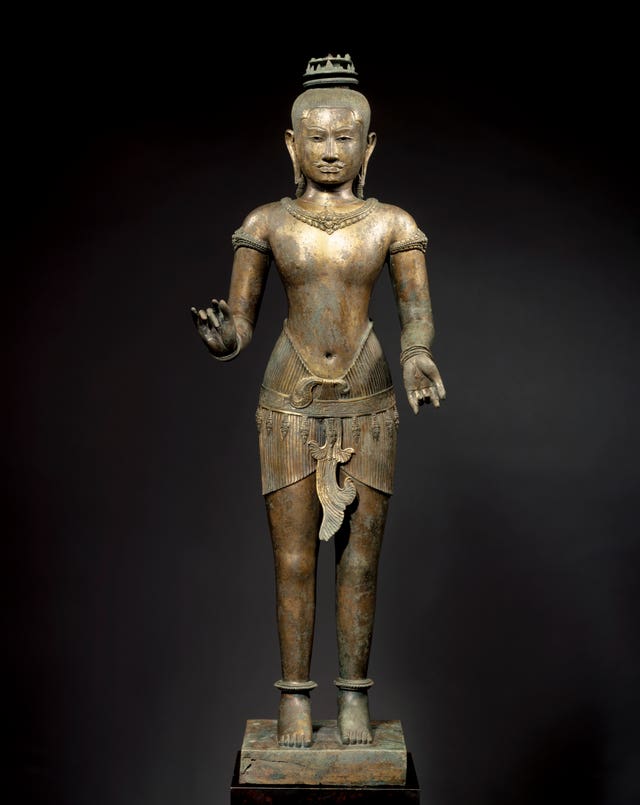New York museum to return ancient sculptures stolen from Cambodia and Thailand
The US is also returning 30 artefacts to Greece, including marble statues

New York’s Metropolitan Museum of Art has said it will return more than a dozen ancient pieces of artwork to Cambodia and Thailand after they were tied to an art dealer accused of running a huge antiquities trafficking network out of Southeast Asia.
This most recent repatriation of artwork comes as many museums in the US and Europe reckon with collections that contain objects looted from Asia, Africa and other places during centuries of colonialism or in times of upheaval.
Fourteen Khmer sculptures will be returned to Cambodia and two will be returned to Thailand, according to the Manhattan museum.
The repatriation of the ancient pieces was linked to art dealer Douglas Latchford, who was indicted in 2019 for allegedly orchestrating a multi-year scheme to sell looted Cambodian antiquities on the international art market. Latchford, who died the following year, had denied any involvement in smuggling.

“As demonstrated with today’s announcement, pieces linked to the investigation of Douglas Latchford continue to reveal themselves,” HSI acting special agent in Charge Erin Keegan said.
“The Metropolitan Museum of Art has not only recognised the significance of these 13 Khmer artefacts, which were shamelessly stolen, but has also volunteered to return them, as part of their ongoing co-operation, to their rightful owners, the people of Cambodia.”
This is not the first time the museum has repatriated art linked to Latchford. In 2013, it returned two objects to Cambodia.
The latest works being returned from the Metropolitan Museum of Art were made between the 9th and 14th centuries and reflect the Hindu and Buddhist religious systems prominent during that time, according to the museum.
Among the pieces being returned include a bronze sculpture called the Bodhisattva Avalokiteshvara Seated in Royal Ease, made some time between the late 10th century and early 11th century.
Another piece of art, made of stone in the seventh century and named Head of Buddha will also be returned.

The pieces handed over to Greek officials in New York date back from as long as 4,700 years ago to the Middle Ages. Manhattan District Attorney Alvin Bragg said the “exquisite” works were collectively valued at 3.7 million dollars (£2.9 million).
Nineteen of the artifacts were voluntarily surrendered from New York gallery owner Michael Ward, the DA’s office said in a statement.
Three others were seized from British art dealer Robin Symes, the statement said, while one was seized from a storage unit belonging to an unspecified New York-based private collector.
“This is an exquisite set of 30 antiquities that represents the extraordinary depth and beauty of Greece’s cultural heritage,” Mr Bragg said.
The works include a Roman-era headless marble statue of Aphrodite, the ancient Greek goddess of love. Mr Bragg’s office said it was recovered from a storage unit that belonged to Symes, where it had been hidden since at least 1999.
There were also seven bronze helmets dating from 6th century BC to 3rd century BC, two bronze and two iron breastplates for soldiers, a medieval silver platter, a marble Cycladic figurine dating to 2,700-2,300 BC and Mycenaean and Minoan Cretan pottery.
Greek culture minister Lina Mendoni praised in a statement the “strong co-operation and hard work” by US and Greek experts that led to the antiquities’ return.
The return follows two similar operations earlier this year, involving 29 antiquities, and last year, when 55 works were returned from New York.
Greece has for decades been targeted by criminal networks engaged in the trafficking of illegally excavated antiquities that command high prices worldwide.
By law, all ancient artefacts found in the country are state property.





